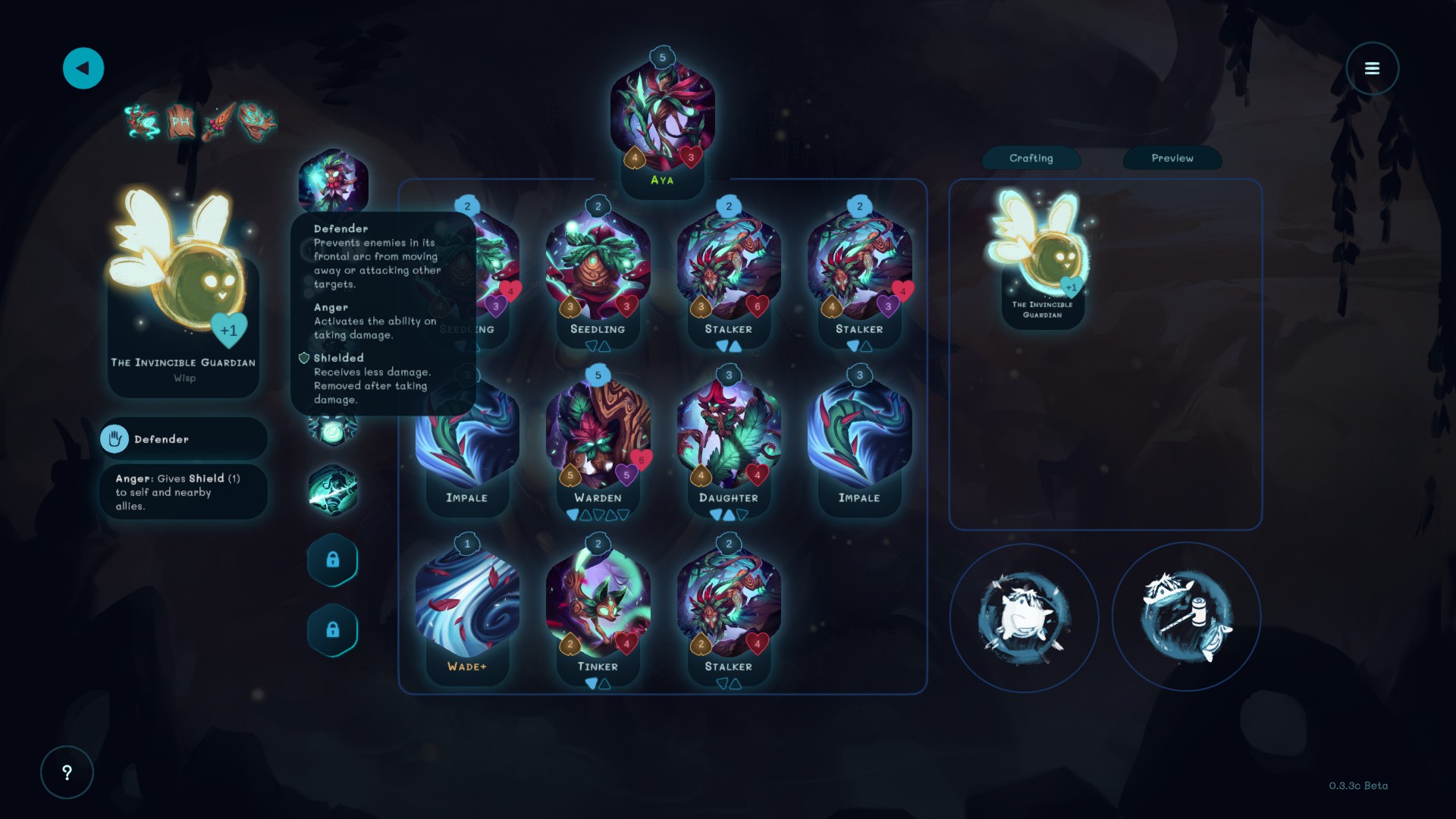Available On: PC (Steam, GOG)
Oaken is a roguelike card battler that focuses more on troop management and positioning rather than deck construction. The Oaken kingdom has been infected with evil and corruption, prompting a heroic plant to set off toward the Great Oak.
Slay the Plants
The journey to the Greak Oak is a series of battles, challenges, and encounters displayed as descending options in a web map, exactly like Slay the Spire and many other roguelike deckbuilders.
New creatures and spells are acquired after most battles, but the opening deck is quite thin, and only four cards are drawn each turn. Cards cost energy, which is automatically accrued at the start of each turn, with more energy given on later turns, like Hearthstone.
What separates Oaken from its genre predecessors is the tactical combat.
![]() Battles are fought on a hex-grid map. Each turn my avatar can move, attack, cast basic spells (such as healing) or use energy to play drawn cards, summoning new creatures and casting more powerful spells.
Battles are fought on a hex-grid map. Each turn my avatar can move, attack, cast basic spells (such as healing) or use energy to play drawn cards, summoning new creatures and casting more powerful spells.
Creatures include tiny seeds that cultivate nearby tiles, and wolf-like stalkers that gain bonuses to attack and health if they’re on cultivated tiles. Synergy!
Positioning is doubly important due to facing and line of sight. Most creatures automatically counter-attack if they’re attacked from the front or sides, while ranged creatures can only attack others within their specific line of sight. One specific creature I can summon rotates enemies toward them, allowing my other creatures to swoop in from behind and destroy enemies with impunity.
Creatures constantly spawn over the course of several turns, making it tricky to plan too far ahead. And newly summoned creatures can’t be used that same turn. Many times I summon a creature only to watch them get killed before I get a chance to use them. Lessons learned!
Will of the Wisps
After successfully finishing a battle or choosing options in an event, I earn rewards in the form of new cards, new lumi dust, or wisps.
Lumi dust is used to upgrade my cards, while Wisps are one-time enhancements that add new abilities or traits. Wisps can add shields or health, damage on spawn, or taunt nearby enemies. Each creature can only equip a single wisp, leading to some agonizing but interesting choices.
Despite the limited enemy types I’ve encountered so far, I’ve enjoyed the tactical hex-grid combat. Units have interesting synergy and tactics, especially when adding wisps. Side objectives earn bonus rewards for completing extra tasks, while hazards such as falling rocks or death-bursting enemies keep me on my toes.
The only challenging aspect I hated was fatigue. Fatigue is a health-reducing debuff that creatures accrue as the levels wear on due to event choices or some enemy attacks. It’s stackable, nasty, and hard to get rid of, only restoring once an entire chapter is completed. Fatigue can easily leave me with an entire team of only one or two hit points, and mounting frustration in battle.
 The Takeaway
The Takeaway
The Early Access version already plays very well. The heavily contrasting colors and forest-themes are reminiscent of Ori and the Blind Forest, which is a big compliment, though the creature animations and sound effects are severely lacking. Fans of roguelike deckbuilders and tactical strategy games should find a lot to enjoy with Oaken, and it’s only going to get better.


